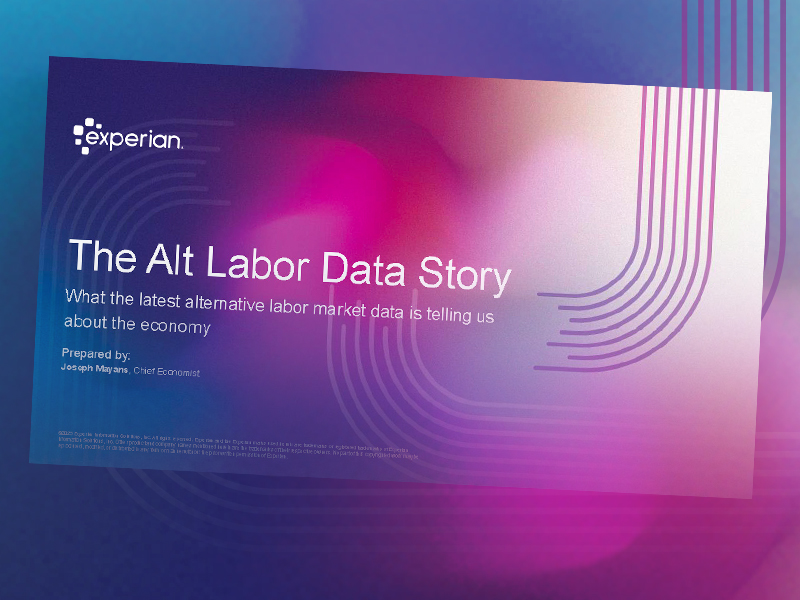
Welcome to the Experian Thought Leadership Hub
Gain insights into the fast-changing world of consumer and business data through our extensive library of resources.
152 resultsPage 1
 Report
Report
The longest U.S. government shutdown has paused official labor data, but private-sector insights reveal key trends shaping the job market. Alternative sources show slowing job creation, modestly higher unemployment, and signs of resilience consistent with the Fed’s outlook.
 Webinar
Webinar
As we step closer to 2026, all eyes remain on the economic outlook, the labor market and consumer health. Experian’s Chief Economist Joseph Mayans, Director of Fintech Gavin Harding and Solution Insights Director Amanda Roth, will provide a look into:
 Video
Video
As the U.S. economy continues to recalibrate post-pandemic, the transportation and warehousing segments of the logistics sector are signaling caution. While the broader logistics industry has remained in expansion mode, Experian’s latest Commercial Pulse Report reveals that delinquencies are rising—an early warning of growing risk in two of the economy’s most critical subsectors.
Check out the full report to see how these trends could impact your strategy!
 Report
Report
The U.S. economy continues to surprise with its resilience - growth forecasts are improving, equity markets are hitting new highs, and fears of an imminent recession are fading. Joseph Mayans’ Vision 2025 session, “Navigating 2026: Global Macro Shifts, U.S. Credit Trends and the Evolving Lending Landscape,” explored the economic forces shaping the next year - from the AI-driven equity boom to structural vulnerabilities in the white-collar labor market. His key takeaway: while AI innovation is fueling growth and optimism, it also introduces new dependencies and risks that will define the next economic chapter.
Highlights:
 White Paper
White Paper
Explore Experian’s latest State of Student Loans white paper to uncover key trends, borrower insights, and the evolving impact of student debt on financial health. Learn how data-driven solutions can help lenders and consumers navigate today’s student loan landscape.
Key considerations include:
 Video
Video
Experian’s latest Commercial Pulse Report dives into the financial health of the restaurant sector amid rising costs and shifting consumer behavior.
Key insights:
What does this mean for lenders and decision makers?
✅ Not all restaurant types face the same risks.
✅ Segmenting credit strategies is more important than ever.
✅ Watch utilization and inquiry trends closely — they may be early indicators of distress.
Check out the full report to see how these trends could impact your strategy!
 Report
Report
The U.S. economy shows signs of steady growth in Q3, yet challenges remain. A cooling labor market and persistent inflation create uncertainty, prompting lenders to stay cautious while adapting. Even in this dynamic environment, growth opportunities continue to emerge across the industry.
 Video
Video
The construction industry has experienced significant growth over the last seven years, but fresh data reveals mounting signs of financial stress that commercial lenders and Chief Risk Officers should be closely monitoring.
Check out the full report to see how these trends could impact your strategy!
 Report
Report
2025 has presented a new wave of challenges for workers and employers to navigate. From immigration policy changes and federal employment cuts, to growing AI capabilities, reduced hiring and job creation revisions, we have seen new dynamics evolve this year that will likely continue to impact the labor market going forward.
The Q3 Labor Market Monitor tracks data from a variety of sources to shed light on these dynamics and gives readers a more comprehensive view of the job market.